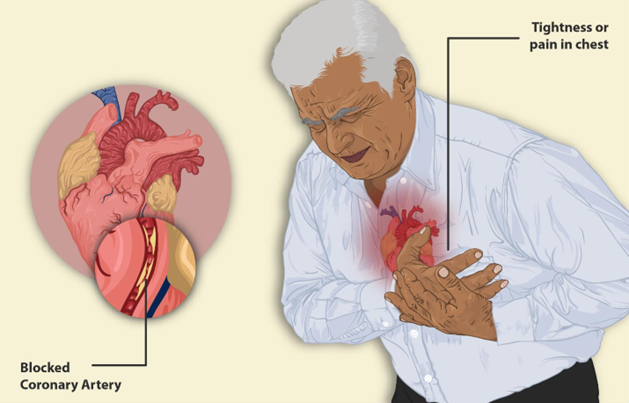The nurse is developing a plan of care for an older client with hypertension who reports chest pain on exertion. Which outcome should the nurse include in the plan of care for this client?

The nurse will call the client weekly to monitor the client's blood pressure and symptoms.
The nurse will encourage the client to walk thirty minutes every day.
The client will take up to 4 nitroglycerine tablets sublingually for chest pain.
The client will record episodes of angina and self-management for one week.
The Correct Answer is D
Choice A rationale:
Weekly monitoring of blood pressure and symptoms is important but does not address the specific issue of chest pain on exertion.
Choice B rationale:
Encouraging daily walking is generally a good recommendation for overall health but does not address the immediate concern of chest pain.
Choice C rationale:
Taking up to 4 nitroglycerine tablets for chest pain may provide temporary relief, but this should be done under the guidance of a healthcare provider and is not a long-term outcome.
Choice D rationale:
Recording episodes of angina and self-management for one week is a specific and appropriate outcome to monitor the client's chest pain and response to interventions.
Nursing Test Bank
Naxlex Comprehensive Predictor Exams
Related Questions
Correct Answer is C
Explanation
Choice A rationale:
Requesting backup from the staff may be necessary if the situation escalates further, but it is not the initial action to take. Providing for personal space and attempting to de-escalate the situation should come first.
Choice B rationale:
Standing in the doorway may not be the most effective approach because it doesn't actively address the client's agitation or attempt to de-escalate the situation.
Choice C rationale:
Providing personal space is an important initial intervention when dealing with an agitated client. This approach helps maintain safety for both the nurse and the client and can reduce the perception of threat or intrusion.
Choice D rationale:
Encouraging the client to sit down may be a helpful de-escalation technique, but it should come after providing for personal space to ensure safety and reduce tension.
Correct Answer is D
Explanation
A. Any history of heart disease: While a history of heart disease is important for general health, it is not the most critical factor prior to initiating sertraline. The nurse should still assess for cardiovascular conditions, but this is not the most pressing concern.
B. Familial history of mental illness: While a familial history of mental illness can inform treatment decisions, it is not the most immediate or critical piece of information before starting sertraline.
C. Current weight: Weight is generally not the primary consideration before starting sertraline. However, weight changes can occur during treatment, but this is more of a concern during the ongoing management of the medication.
D. Medication history: Sertraline, as a selective serotonin reuptake inhibitor (SSRI), can interact with other medications, especially those affecting serotonin levels (e.g., other antidepressants, MAO inhibitors, etc.). It is crucial to assess the client’s current medication history to prevent harmful drug interactions, such as serotonin syndrome. This is the most important information to gather before initiating treatment.
Whether you are a student looking to ace your exams or a practicing nurse seeking to enhance your expertise , our nursing education contents will empower you with the confidence and competence to make a difference in the lives of patients and become a respected leader in the healthcare field.
Visit Naxlex, invest in your future and unlock endless possibilities with our unparalleled nursing education contents today
Report Wrong Answer on the Current Question
Do you disagree with the answer? If yes, what is your expected answer? Explain.
Kindly be descriptive with the issue you are facing.
